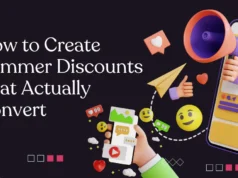Product launches can make or break a business. You’ve invested months of development, testing, and planning. Now comes the crucial moment: getting people to actually buy your product.
Most companies rely on traditional marketing channels like paid ads, email campaigns, and social media posts. But there’s a powerful strategy that many overlook during launch planning: referral marketing.
Referral marketing turns your existing customers into active promoters who bring in new buyers. When integrated into your product launch strategy, it can amplify your reach, reduce acquisition costs, and create sustainable growth momentum that extends far beyond launch day.
This guide will show you exactly how to weave referral marketing into your product launch plan, from pre-launch preparation to post-launch optimization.
Why Referral Marketing Works So Well for Product Launches
Referral marketing leverages the most trusted form of advertising: word-of-mouth recommendations. People trust recommendations from friends and family 92% more than any other form of advertising.
During a product launch, this trust becomes even more valuable. New products face natural skepticism. Potential customers wonder: “Does this actually work?” “Is it worth the price?” “Can I trust this brand?”
When a friend recommends your product, these concerns dissolve. The recommendation comes with built-in social proof and credibility that no amount of advertising can match.
Referral marketing also creates a compounding effect. Each new customer becomes a potential advocate who can bring in more customers. This exponential growth pattern is particularly powerful during launches when you need to build momentum quickly.
Pre-Launch: Building Your Referral Foundation

Your referral marketing success starts before you officially launch. The pre-launch phase is when you identify potential advocates and create the systems they’ll use to promote your product.
Identify Your Early Advocates
Start by looking at your existing network. These people are most likely to become your first referrers:
- Beta testers who loved your product
- Email subscribers who’ve shown high engagement
- Social media followers who regularly interact with your content
- Industry contacts and professional connections
- Existing customers (if you’re launching additional products)
Create a list of these potential advocates. You’ll reach out to them directly with early access and referral opportunities.
Design Your Referral Program Structure
Your referral program needs clear rules and attractive incentives. Here are the key elements to define:
Reward Structure: Decide what you’ll offer both referrers and new customers. Popular options include:
- Discounts (percentage or dollar amount)
- Free products or upgrades
- Cash rewards
- Exclusive access to new features
- Points in a loyalty program
Qualification Criteria: Determine when rewards are earned. Common triggers include:
- When someone signs up using a referral link
- When a referred customer makes their first purchase
- When a referred customer completes onboarding
- After a referred customer remains active for a specific period
Tracking System: Choose how you’ll track referrals. Options include:
- Unique referral codes
- Personalized links
- Built-in sharing tools within your product
- Manual tracking for small-scale launches
Create Referral-Ready Content
Your advocates need high-quality content to share effectively. Prepare these materials before launch:
Product Demonstrations: Create videos or interactive demos that clearly show your product’s value. Make these easy to share across social platforms.
Benefit-Focused Copy: Write short, compelling descriptions that focus on customer benefits rather than features. Your advocates can use these in their own words when making recommendations.
Visual Assets: Design shareable graphics, infographics, or product photos that look professional and grab attention on social media.
FAQs and Objection Handlers: Prepare answers to common questions or concerns. This helps your advocates respond confidently when prospects ask for more information.
Launch Phase: Activating Your Referral Network
When launch day arrives, you want to activate your referral network immediately. This creates early momentum and helps you reach beyond your existing audience.
Reach Out to Your Advocate List
Contact your identified advocates personally. Don’t send a generic mass email. Instead, craft personalized messages that:
- Thank them for their previous support
- Explain why you think they’d be perfect ambassadors
- Provide early access to your product
- Share their unique referral code or link
- Include the sharing materials you prepared
Make Referrals Part of Your Launch Sequence
Integrate referral opportunities into every touchpoint of your launch:
Launch Email: Include referral information in your launch announcement email. After introducing your product, add a section like: “Love what you see? Share it with friends and you’ll both get [reward].”
Social Media Posts: Create posts specifically designed for sharing. Use engaging visuals and clear calls-to-action that encourage followers to share with their networks.
Product Onboarding: If your product requires sign-up or installation, include referral opportunities in the onboarding flow. New users are often most excited right after they start using your product.
Thank You Pages: After someone makes a purchase, redirect them to a page that celebrates their decision and invites them to share with friends.
Create Launch-Specific Incentives

Consider offering enhanced rewards during your launch period. Limited-time bonuses create urgency and encourage immediate action. For example:
- “Refer 3 friends during launch week and get a free upgrade.”
- “First 100 referrals get double rewards.”
- “Launch week only: Both you and your friend get 30% off.”
Post-Launch: Optimizing and Scaling Your Referral Program
The work doesn’t stop after launch day. The post-launch phase is when you analyze performance, optimize your program, and scale what’s working.
Track and Analyze Performance
Monitor these key metrics to understand your referral program’s effectiveness:
Participation Rate: What percentage of your customers are making referrals? Low participation might indicate unclear instructions or insufficient incentives.
Conversion Rate: How many referrals turn into actual customers? Poor conversion could mean your advocates are targeting the wrong audience or using ineffective messaging.
Customer Lifetime Value: Are referred customers more valuable than those acquired through other channels? This helps you determine appropriate reward levels.
Viral Coefficient: How many new customers does each existing customer bring in? A coefficient above 1.0 means your program is driving exponential growth.
Optimize Based on Data
Use your performance data to improve your program:
Adjust Rewards: If participation is low, consider increasing incentives. If conversion is poor, you might need to change reward timing or structure.
Improve Sharing Tools: Make it easier for advocates to share by improving your referral links, social media integration, or sharing copy.
Segment Your Advocates: Different customer types might respond to different incentives. Create targeted approaches for your most valuable referrers.
Test New Channels: Experiment with different platforms and methods for promoting your referral program.
Scale Your Success
Once you’ve identified what works, scale your efforts:
Automate Referral Outreach: Use email sequences to automatically invite customers to join your referral program at optimal times.
Create Referral Leaderboards: Gamify the experience by showing top referrers and offering special recognition or rewards.
Develop Referral Partnerships: Identify your best advocates and create formal partnership arrangements with enhanced benefits.
Integrate with Customer Support: Train your support team to mention referral opportunities when helping satisfied customers.
Common Pitfalls to Avoid
Learning from others’ mistakes can save you time and money. Here are the most common referral marketing pitfalls during product launches:
Overcomplicating the Process
Keep your referral program simple. Complicated rules, multiple steps, or confusing reward structures will discourage participation. If you can’t explain your program in one sentence, it’s too complex.
Focusing Only on Rewards
While incentives matter, don’t neglect the emotional aspects of referrals. People refer to products they genuinely love and brands they want to support. Focus on creating an exceptional product experience first.
Ignoring the Referee Experience
Don’t just think about your existing customers. Consider the experience of people receiving referrals. Are they getting a good deal? Do they feel welcomed? A poor referee experience will damage your advocates’ relationships and reduce future referrals.
Launching Without Testing
Test your referral system thoroughly before launch. Broken links, incorrect reward calculations, or technical glitches can frustrate your best advocates and damage your launch momentum.
Advanced Strategies for Referral Marketing Success
Once you’ve mastered the basics, these advanced strategies can take your referral program to the next level:
Micro-Influencer Partnerships
Identify customers who have significant social media followings in your target market. Offer them enhanced referral rewards or exclusive partnership opportunities.
Referral Program Tiers
Create different reward levels based on referral volume. This encourages your most active advocates to keep referring and gives casual referrers something to aspire to.
Cross-Product Referrals
If you have multiple products, allow customers to refer across your entire product line. This increases referral opportunities and can introduce customers to products they might not have discovered otherwise.
Community Building
Create exclusive communities for your referral program participants. This builds stronger relationships with your advocates and provides a platform for sharing best practices.
Making Referrals Your Competitive Advantage
Referral marketing isn’t just a nice-to-have addition to your product launch plan—it’s a competitive advantage that can set you apart from companies relying solely on paid advertising.
When you successfully integrate referral marketing into your launch strategy, you create a self-reinforcing cycle of growth. Happy customers bring in new customers, who become happy customers themselves, who then bring in even more customers.
Start by identifying your potential advocates and creating simple, attractive referral opportunities. Test your systems before launch, activate your network on launch day, and continuously optimize based on performance data.
Remember that the best referral programs are built on genuine customer satisfaction. Focus on creating an exceptional product experience, and your customers will naturally want to share it with others.
Your next product launch doesn’t have to rely on expensive advertising alone. With a well-executed referral marketing strategy, you can turn your customers into your most powerful marketing channel.
Learn more about: Why Product Positioning Is the Secret to Better Marketing









